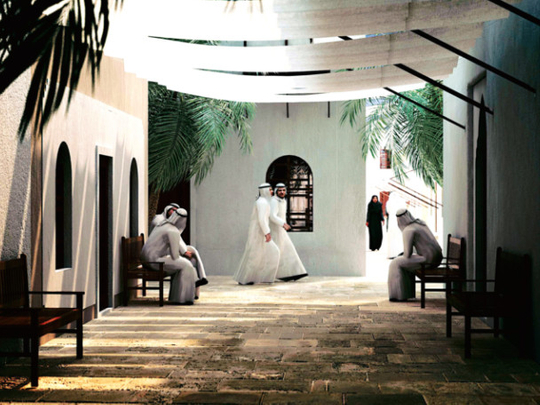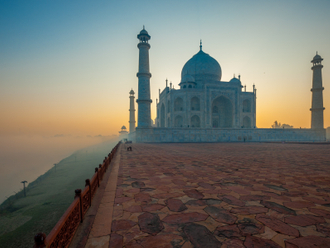
The strategy of diversification is paying handsome dividends for Abu Dhabi, which continues to broaden its economic base and channel hydrocarbon revenues into socio-economic development. From 2014-17, the emirate’s Department of Economic Development forecasts economic growth at 6.7 per cent as oil production rises and government spending of Dh330 billion takes effect.
The figure is slightly lower than last year’s 7.4 per cent, but is in line with the multi-decade Abu Dhabi Vision 2030, Shorooq Al-Za’abi, Head of Development Indicators at the department said at the recent UAE Outlook 2014 conference. The strategy is designed to reduce the emirate’s dependence on fossil fuels and raise the non-oil component of its economy to more than 60 per cent of GDP by 2030.
It is expected that the GDP will have tripled by that time as the economy repositions itself around knowledge clusters instead of resources. The emirate has the world’s tenth-largest hydrocarbon reserves.
Non-oil growth
Last year, the non-oil sector expanded almost 10 per cent, in spite of slower overall growth rates, according to official figures.
Growth is highest in the information and communication sector, which grew at 15.29 per cent, followed by manufacturing (12.56 per cent) and accommodation and food services (11.62 per cent). Extractive oil and gas activities contributed 55 per cent of the total GDP in 2013, compared to 57 per cent in 2012.
“By 2030, we are targeting a 64 per cent contribution from the non-oil sector to Abu Dhabi’s total GDP. In order to achieve this aim, the industrial sector will play a vital role,” Fahad Saeed Al Raqbani, Director General of the Abu Dhabi Council for Economic Development, is quoted as saying in the latest edition of the Economic Review.
Quantum leap
The change will come about as the emirate “bids to make a quantum leap in record time to join developed countries”, in the words of Nasser Ahmed Al Sowaidi, the former Chairman of Abu Dhabi Department of Economic Development. Work proceeds on several fronts, from infrastructure to industry.
The emirate is in a strong financial position according to international agencies have confirmed. Standard & Poor’s Ratings Services affirmed its AA/A-1+ long- and short-term foreign and local currency sovereign credit ratings on Abu Dhabi, with a ‘stable’ outlook late last year. “The ratings on Abu Dhabi are supported by its strong fiscal and external positions, which afford it fiscal policy flexibility. The exceptional strength of its net asset positions also provides a buffer to counter the negative impact of oil price volatility on economic growth and government revenues, as well as on the external account,” S&P said in its report.
Recently, Fitch Ratings endorsed Abu Dhabi’s long-term foreign and internal banking International Depository Receipts with AA ratings and stable outlooks. The capital was the third-strongest of all countries rated, behind Luxembourg and Kuwait.
Strong investment
Much of the new investment is in the infrastructure sector with new roads and railways and strengthened port facilities in the works. More than Dh50 billion is being invested in train systems. Within the emirate, a 131-km metro system costing Dh11 billion will keep pace with a growing population. Etihad Rail, a Dh40 billion plan to connect the emirate with Dubai and the northern emirates as well as the country’s major ports through 1,200 kilometres of rail track.
Aviation is being improved by the expansion of Abu Dhabi International Airport, with the building of the new Dh10.8-billion Midfield Terminal, set to be completed by 2017. The 700,000-square-metre site will take Abu Dhabi International’s current capacity from 17.5 million passengers a year up to 55 million.
Also being built are two major new roads costing Dh7.42 billion, boosting connectivity to Dubai and the northern emirates as well as to the rest of the GCC.
Plans are also in place to build a major financial centre. The Abu Dhabi Global Market on Al Maryah Island aims to lure top global banks to the capital.
“A healthy financial services sector is not only identified as one of the nine pillars in the Abu Dhabi Economic Vision 2030, but as illustrated in major cities globally, it is an integral component to developing and sustaining a diversified economy,” Ahmad Al Sayegh, Chairman, Abu Dhabi Global Marketplace (ADGM), told the Global Financial Markets Forum this month.
Like the neighbouring Dubai International Financial Centre, the ADGM will house a registration bureau, a financial services regulations bureau and its own courts.
Industry boost
The industry and power and water sectors will see a reported total of $11 billion (around Dh40 billion) in contracts awarded until 2020.
Work continues on the $7-billion Khalifa Port, which will be able to handle 15 million TEUs and 35 million tonnes of general cargo per year when complete in 2030. Two more projects, including the installation of overhead transmission lines to link a number of power plants in different parts of the UAE costing Dh810 million and the construction of a Dh132 million Al Ruwais sewage water treatment plant, have also recently received the greenlight.
Industry is being developed in accordance with a strategy focusing on ten sectors, including aerospace, renewable energy, semiconductors, steel, aluminium, engineered metal products, petrochemicals and plastics products. Abu Dhabi’s industrial zones, including the Khalifa Industrial Zone Abu Dhabi support this strategy. Mubadala is also helping broaden the emirate’s economy, with investment in the aerospace and high-tech manufacturing sectors.
Among its many interests are the composite aero structures manufacturing facility, Strata, and the Advanced Technologies Investment Company, which has its primary investment in the world’s second-largest semiconductor manufacturer. Through such targeted investments, Mubadala is helping create a technology ecosystem in Abu Dhabi, important to diversify the wider economy. “The contribution of the industrial sector is increasing steadily, now standing at 40 per cent of GDP. This places us on track to achieve our 64 per cent target for non-oil contributions to GDP by 2030,” Al Raqbani told Gulf News recently.
Social development
Social development plans include housing loans for UAE nationals, the building of new residential communities around the emirate and the establishment of organised ranch complexes and other agricultural initiatives. Dh100 million is to be made available in hydroponics loans for agriculture to produce more food locally by 2017.
Fourteen new health-care facilities are being built. The new state-of-the-art 719-bed New Al Ain Hospital project to the tune of Dh4.3 billion is the biggest new development and will be managed by the Abu Dhabi Health Services Company. Capacity at Shaikh Khalifa Medical City will be increased from 568 to 838 beds with a new general hospital, a specialised paediatric hospital and a dedicated women’s health hospital.
Municipal departments are also working to manage assets better, and develop recreational facilities and amenities for residents. New parks are to be created across the emirate and communities improved so children do need to travel more than five kilometres to get to school, Majid Ali Al Mansouri, Chairman, Department of Municipal Affairs, told Gulf News recently.
And for the first time, Abu Dhabi residents will be able to directly comment on government plans, it was announced earlier this month. When the Plan Capital 2030, an updated version of the Vision 2030, goes live this year, a summary will be shared with residents to ensure they have the facilities they need, such as schools, mosques and shops. Community involvement will improve sustainability and go a long way in making Abu Dhabi a desirable place to live.






